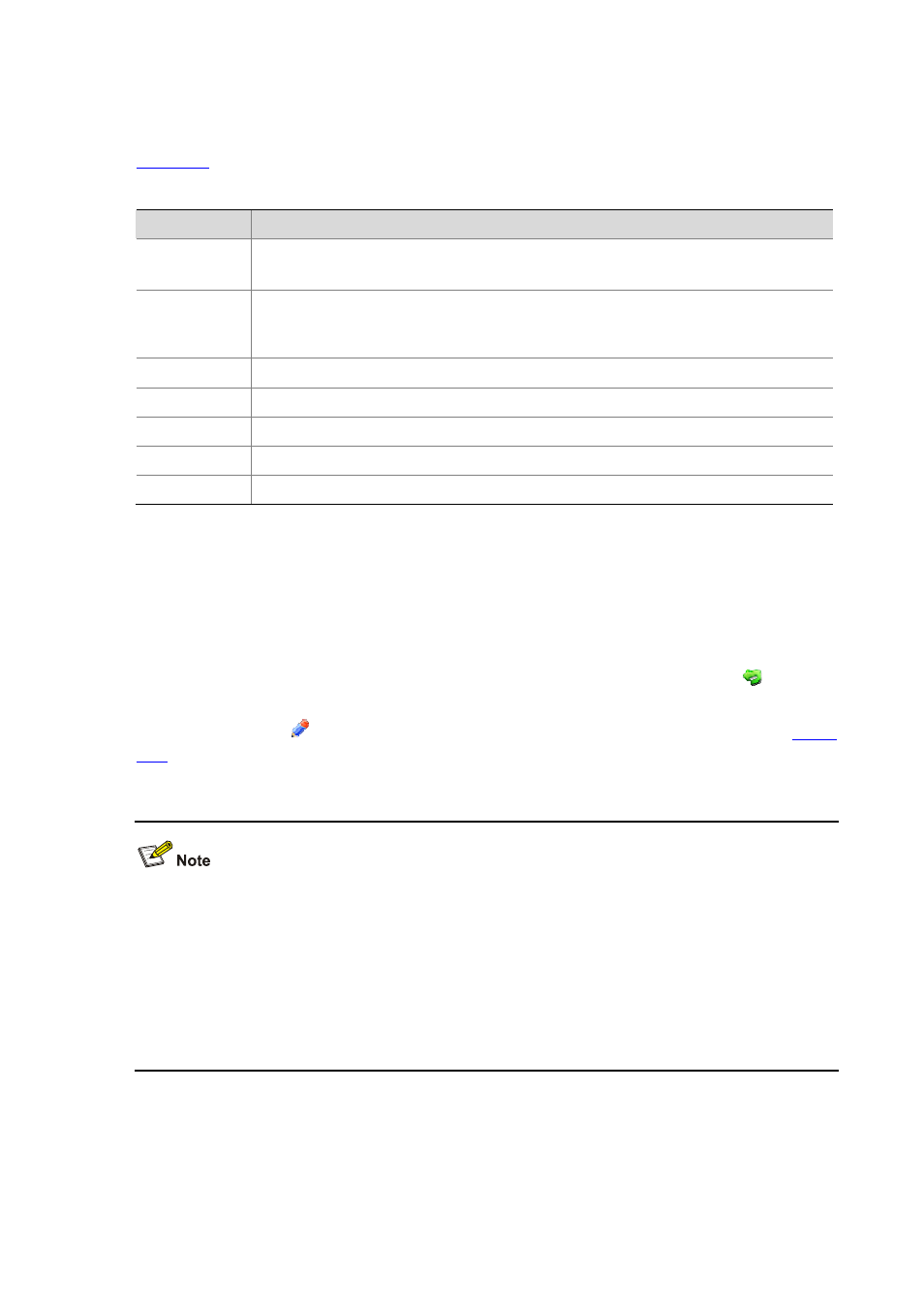H3C Technologies H3C SecBlade IPS Cards User Manual
Page 118

14-5
You can specify search conditions and click Query to search for the default rules matching the
conditions.
describes the rule list. You can click any field name of the list to sort the rules by the field.
Table 14-3 IPS rule list description
Item
Description
Attack ID
ID of the attack that the default rule is for.
When querying rules, if you enter 0 or leave the field blank, it means all attack IDs.
Name
Name of the default rule
When querying rules, if you enter a string in the Name text box, it means all rules with a name
containing the specified string. If you leave the field blank, it means all rule names.
Category
Attack type that the default rule is for.
Level
Severity level of the attack matching the default rule.
Default
Whether the default rule is in default state or has been modified.
Action Set
Action set applied to attacks matching the rule.
Status
Whether the default rule is enabled or not.
By selecting the check box before a default rule, you can change the action set of the rule and
enable/disable the rule as follows:
z
To change the action set of the default rule, select another action set for the Action Set field, and
then click Modify Action Set.
z
To enable or disable the default rule, click Enable Rule or Disable Rule.
z
To restore the settings of the default rule to the defaults, click Reset Rule or click the
icon of the
rule directly.
You can also click the
icon of a default rule to enter the rule configuration page as shown in
, where you can enable/disable the rule, change the action set, and view the information of the rule
and the application of the IPS policy.
z
The default rules of the default IPS policy Attack Policy cannot be modified but can be viewed.
z
On the Rule page, you can view the vulnerability’s CVE (Common Vulnerabilities and Exposures),
BID (BugTraq ID, which can by queried from http://www.securityfocous.com), and the vulnerability
ID numbered by Microsoft. You can click a CVE link, for example
http://www.cve.mitre.org/cgi-bin/cvename.cgi?name=CVE-2003-1216, to access the CVE
webpage for the vulnerability details; click a BID link, for example
http://www.securityfocus.com/bid/9122, to open a webpage related to the vulnerability.
